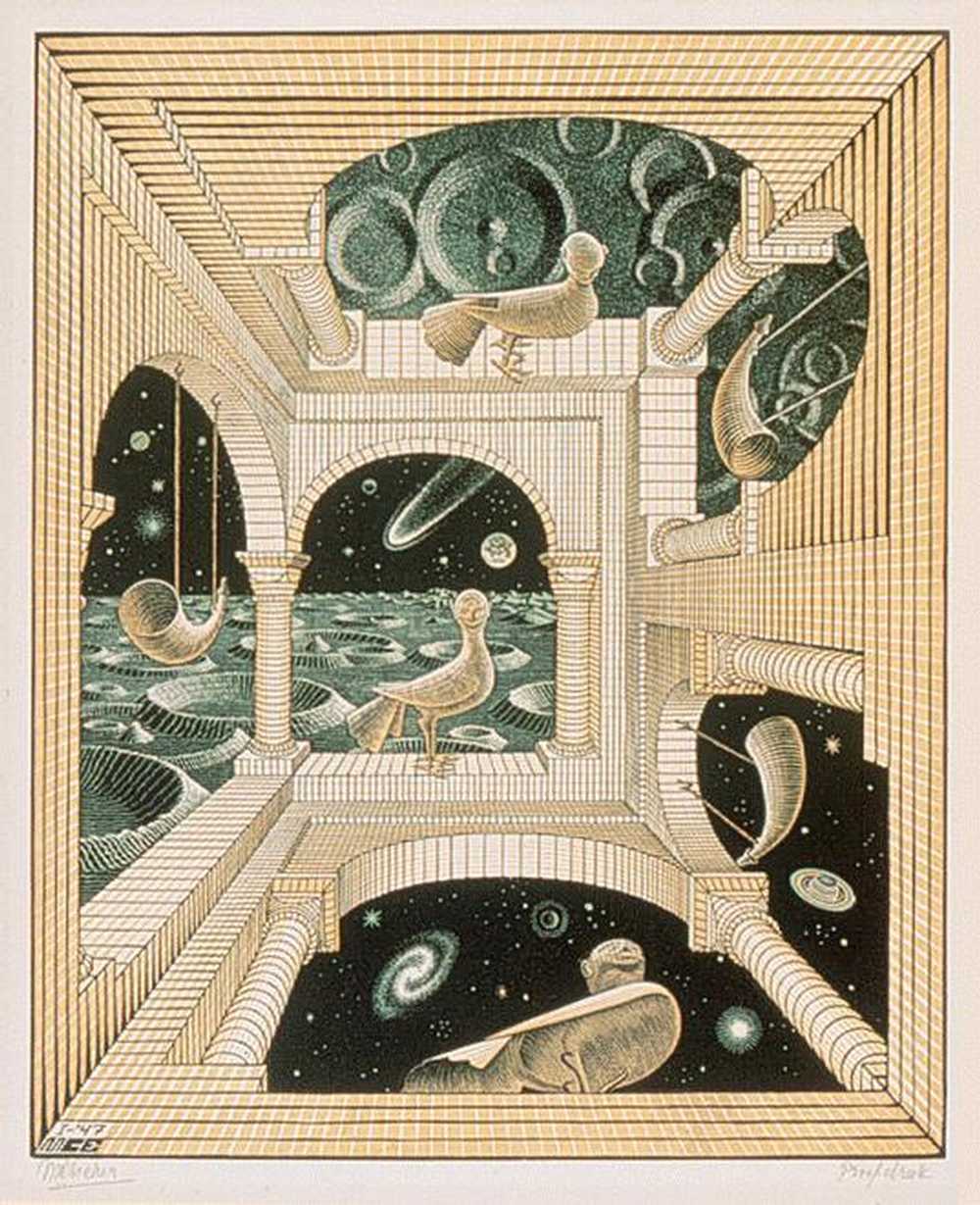
"Other World", by M.C. Escher








Some of the most challenging aspects of
this program were as follows:
My demo assumes the following:
All textures are in TGA format -- RGB or RGBA
Higher alpha means more opaque; the reference Interior Mapping demo did the opposite.
All textures reside in a file structure as follows:
<program dir>
/textures/
/{right,left,top,bottom,front,back,world}/ -- “world” applies to the large outer sphere
/{posx, negx, posy, negy, posz, negz, exterior}.tga